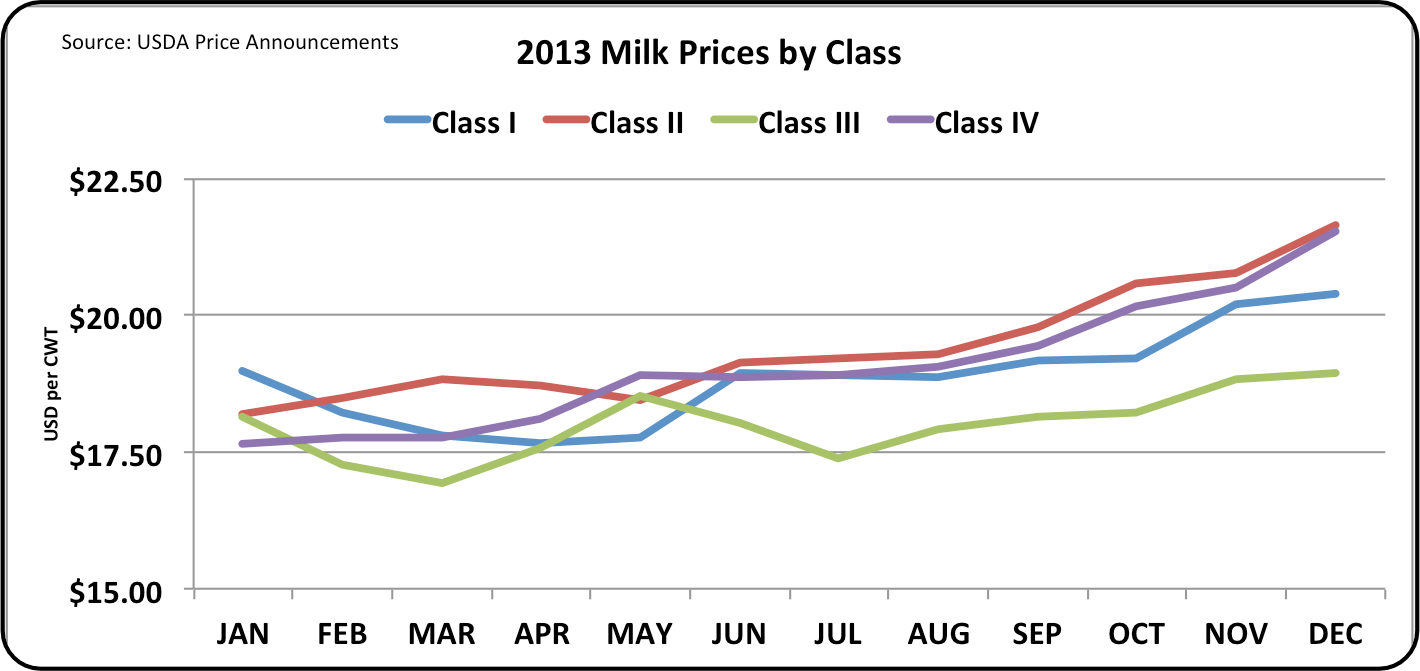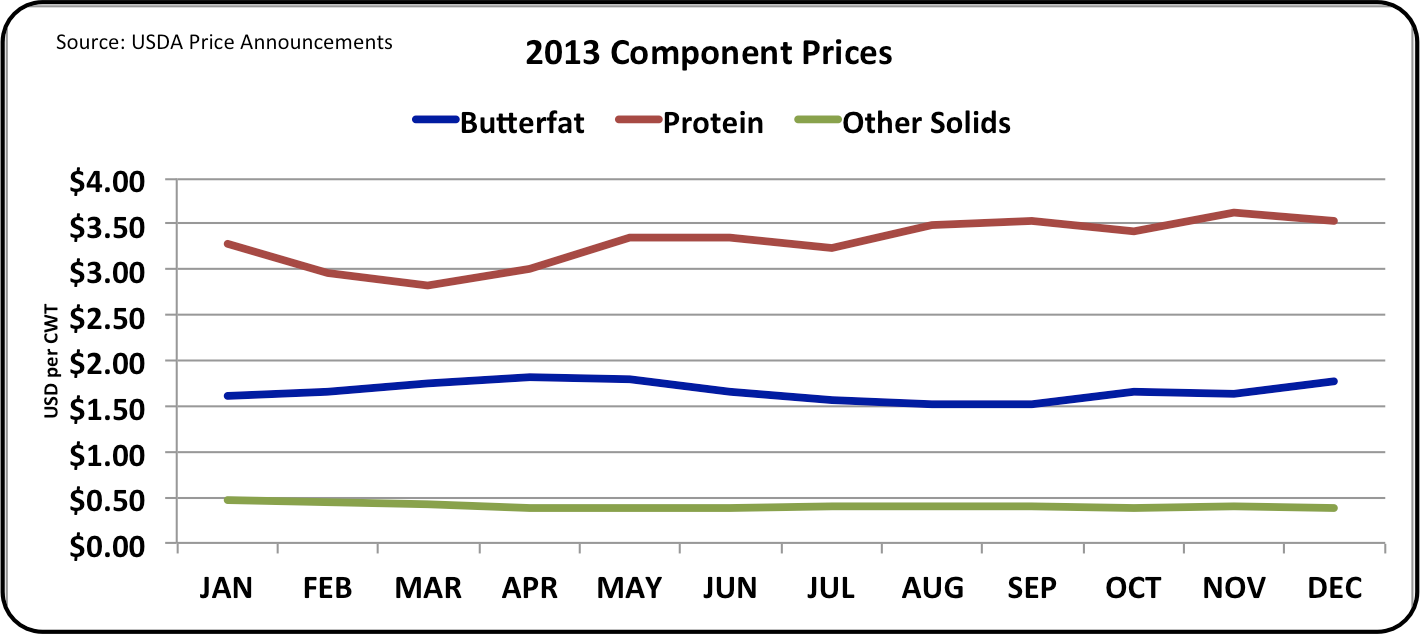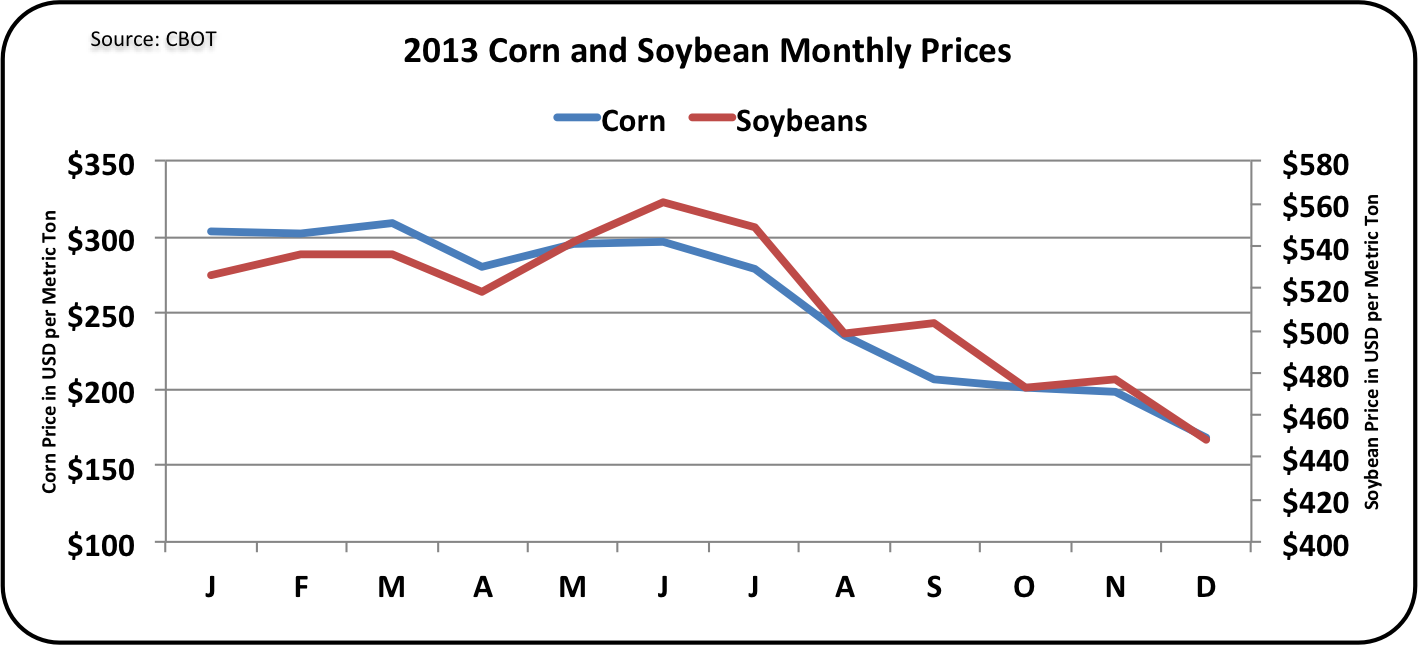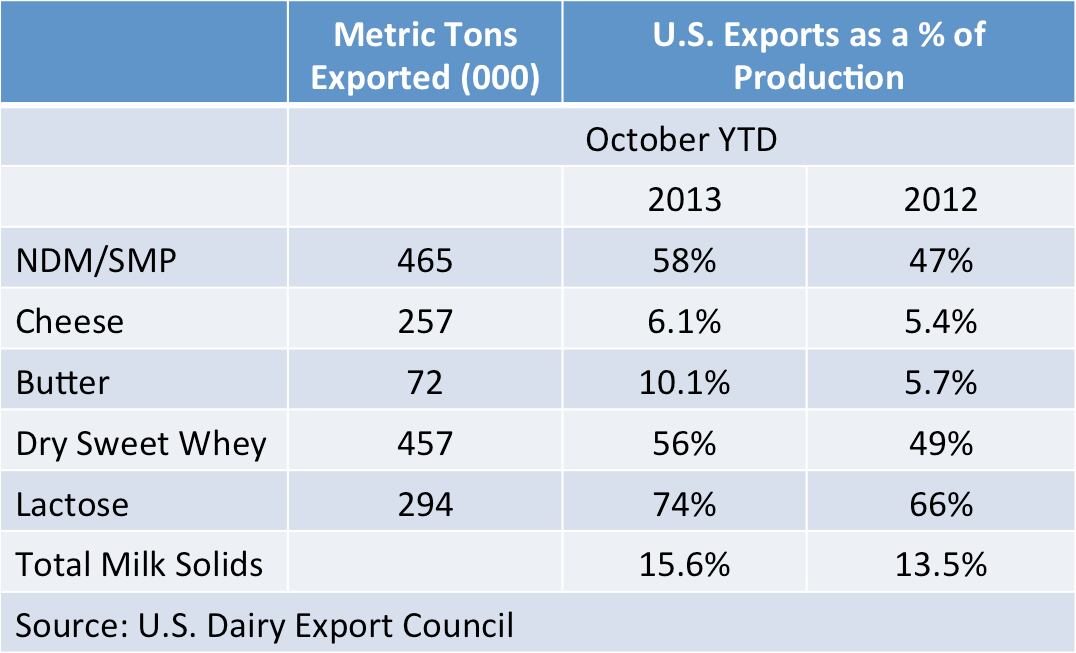The year of 2013 has been a positive one for the US dairy industry.
Producer milk prices have increased while feed prices have decreased. Exports have increased significantly helping to create demand and keep producer milk prices high.
Milk payment for 65% of the US dairy producers is based on the Federal Milk Order payment system. Many outside of the Federal Orders are paid on similar formulas. Within that system, there are four recognized classes of milk with different payment formulas. Class I is fluid milk for drinking, Class II milk is used for manufacturing soft processed products like yogurt and cottage cheese, Class III milk is used to make hard cheeses, and Class IV milk is used for nonfat dry milk and butter.
In 2013, each of these increased, but the largest increase came from Class IV.
The Class IV milk price is based on the price of Nonfat Dry Milk. At the beginning of 2013, Class IV milk was the lowest paid, which is typical. However, during the year, due to very strong exports, the class IV price increased significantly. By the formulas used to determine these prices, the Class I and II prices increased in line with the Class IV price. The Class III price which is primarily determined by the wholesale price of cheese also increased, but at a slower rate.

Most producers in the Federal Milk Marketing Orders are paid based strictly on the amount of components in their milk.
The payments are based on the weight of protein, fat and other solids in the milk.
During 2013, payment for protein increased, which is in line with the long-term trends. Payment for milk fat and other solids was fairly stable.

Feed costs were down significantly.
Corn and soybean prices are shown below because they are the two largest US crops, but other feed stuffs follow a similar pattern.

Export data is available only through October, but the year-to-date (YTD) data shows record high exports in 2013.
These exports were the driver for most of the milk price increases shown above.

Continued strength in exports is expected.
The US$ has weakened in 2013 making US dairy products less expensive in the international markets and the US Dairy Export Council (USDEC) has contributed effectively by assisting manufacturers with dairy exports. Exports have been further strengthened by strong global demand.

Overall, 2013 was a very good year for the US dairy industry and 2014 is also looking very positive.
John Geuss (left) is the editor of US dairy commodities blog, MilkPrice.
To see John's in-depth month-by-month examinations of American dairy commodity movements, visit MilkPrice.
